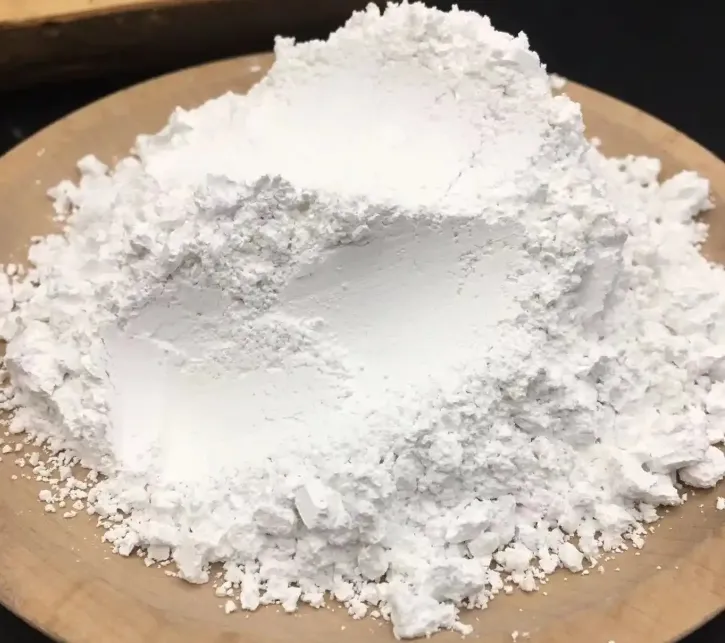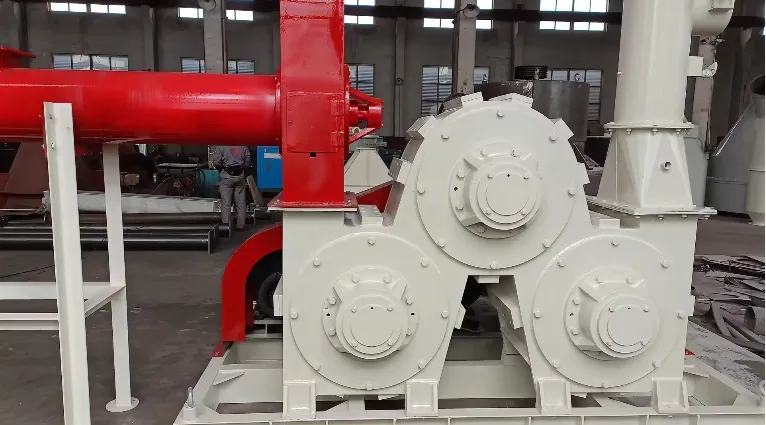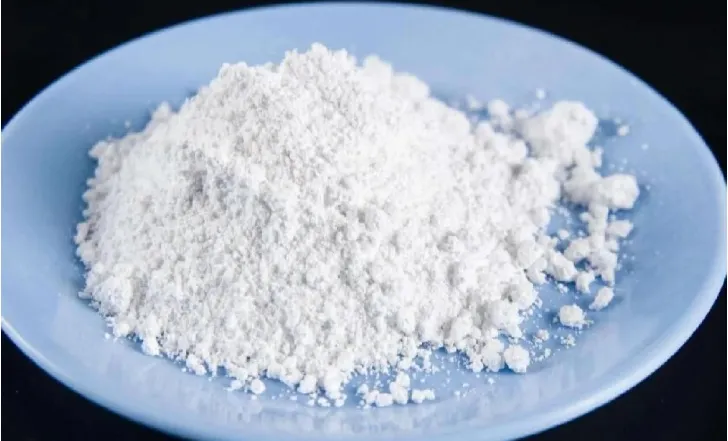In recent years, with the rapid development of calcium carbonate processing technology and the leap-forward development of calcium carbonate modification technology.
Calcium carbonate can reduce the cost of products while also improving many of their properties, and some of their properties are unique. As micro-foaming technology matures and hollow calcium carbonate technology succeeds, the weight-reduction technology of calcium carbonate composites will soon enter industrial production. Calcium carbonate has transformed from a traditional filler into a new modifier.

Environmental benefits of calcium carbonate
Save oil resources
Assuming 30% calcium carbonate content in PE,
the annual output of plastic packaging bags is 3 million tons. This can save 900,000 tons of stone-based resin and reduce oil consumption by 2.7 million tons.
Environmental performance
Adding calcium carbonate to plastic trash bags during incineration can increase combustion speed and shorten burn time. The calcium carbonate expands when heated, creating tiny holes, which increase the surface area exposed to oxygen, speeding up combustion.
For example, polyethylene film with 30% calcium carbonate burns in 4 seconds, compared to 12 seconds for pure plastic film. Calcium carbonate acts as a wick, promoting more complete combustion and reducing black smoke emissions. The alkalinity of calcium carbonate absorbs acidic gases, reducing toxic smoke and lowering acid rain chances.
Japan requires 30% calcium carbonate in incinerated plastic bags. Calcium carbonate-filled bags burn faster, generate less heat, don’t drip, and produce no black smoke, reducing secondary pollution. They also protect the incinerator from damage.
Universal modification effects of calcium carbonate
Improving the rigidity of composite materials
Calcium carbonate improves the bending strength, bending modulus, hardness, and wear resistance of composites. For plastic films, the increased rigidity of the composite significantly enhances film stiffness. This helps the film remain flat and prevents curling.
Improving dimensional stability of composite materials
Improved dimensional stability is reflected in reduced shrinkage, warping, coefficient of linear expansion, and creep. Calcium carbonate filling significantly enhances dimensional stability and promotes isotropy.
Improving the heat resistance of composite materials
Calcium carbonate improves the thermal stability of composites by absorbing substances that promote decomposition. For example, the thermal stability of PBAT/calcium carbonate composites is significantly higher than pure PBAT. In PVC products, adding lightweight calcium carbonate absorbs hydrochloric acid generated during decomposition, greatly improving PVC’s processing thermal stability.
Improve the tear resistance of the film
Calcium carbonate improves the thermal stability of composites by absorbing substances that promote decomposition. For example, the thermal stability of PBAT/calcium carbonate composites is significantly higher than pure PBAT. In PVC products, adding lightweight calcium carbonate absorbs hydrochloric acid generated during decomposition, greatly improving PVC’s processing thermal stability.
Improve the tear resistance of the film
The general plastic films have the disadvantages of high longitudinal strength and low transverse strength, especially PBS, PLA, PHA aliphatic polyester films. Adding calcium carbonate increases the isotropy of the composite and significantly improves tear resistance.
Special modified properties of calcium carbonate
Effects on tensile and impact properties
Not all calcium carbonate improves tensile and impact strength. The effect depends on the particle size and surface treatment of the calcium carbonate.
The particle size of calcium carbonate affects its modification effect on plastic. Generally, particles under 1000 mesh are used for incremental modification. Particles between 1000 and 3000 mesh, with a content below 10%, have some modification effect. Particles above 5000 mesh are functional calcium carbonate, with significant modification effects. They can improve tensile and impact strength.
The surface treatment of calcium carbonate also affects its performance. Properly treated calcium carbonate can improve the tensile and impact strength of composites.
With the continuous development of organic/inorganic composite theory, CaCO3 has evolved from a simple filler to a functional material. For example, homopolymer PP/CaCO3 composites made with calcium carbonate have a notched impact strength more than twice that of the base plastic.
Smoke suppression during combustion
CaCO3 has excellent smoke-suppressing properties. It works by reacting with hydrogen halides in smoke, capturing them to form stable CaCl2. Polymers that produce hydrogen halides during combustion, such as vinyl chloride, chlorosulfonated polyethylene, and neoprene, can use CaCO3 as a smoke suppressant. Since combustion is a solid-gas heterogeneous reaction occurring only on the surface of solid particles, the particle size of CaCO3 becomes a crucial factor for smoke suppression. Smaller particles have a much larger specific surface area, and finer calcium carbonate yields better smoke suppression.
Anti-adhesive agent
The blown tubular film containing calcium carbonate has good opening properties and will not stick when curled. Calcium carbonate acts as an opening agent.
Increase thermal conductivity
The addition of calcium carbonate increases the thermal conductivity of the film, allowing the blown film bubble to cool faster, improving production efficiency and increasing extruder output. For example, adding 25% lightweight calcium carbonate to PVC sheets, heating to 200°C takes only 3.5 seconds, while pure PVC sheets require 10.8 seconds, a threefold increase in thermal conductivity.
Improve liquidity
Calcium carbonate improves the flowability of the composite system, reducing melt viscosity and extruder torque. This increases extruder output and improves production efficiency. Different types of calcium carbonate have varying effects on flow. The order of flowability is: large-sized calcite > marble CaCO3, dolomite CaCO3 > small-sized calcite > lightweight CaCO3.
Color matching performance
High-white calcium carbonate can replace some white pigments, such as titanium dioxide, saving on the cost of expensive titanium dioxide. Large-sized calcite calcium carbonate, due to its high whiteness and strong opacity, becomes the preferred choice.
Increased breathability
Plastic films filled with calcium carbonate create tiny pores during stretching, which allow water vapor to pass through but block liquid water. This makes them suitable for breathable plastic products. A typical breathable film is made by adding large amounts of calcium carbonate and stretching the film. For producing breathable films, calcium carbonate with a 3000 mesh size is usually chosen,
and the particle size distribution must be very narrow.
Promote product degradation performance
When polyethylene plastic bags containing calcium carbonate are buried underground, calcium carbonate may react with carbon dioxide and water to form water-soluble Ca(HCO3)2. This causes the calcium bicarbonate to leave the film, leaving tiny holes. These holes increase the surface area of the plastic film exposed to air and microorganisms, promoting the degradation of the product.
Conclusion
The positive modification effect of calcium carbonate significantly enhances its application value through surface functionalization and synergy with composites. With breakthroughs in nanotechnology, surfactant modification, and polymer coating, modified calcium carbonate shows great potential in plastics, rubber, coatings, and building materials.
It improves mechanical properties, processing flow, and functional expansion.
This green and efficient modification strategy reduces the limitations of traditional fillers and provides an economical, environmentally friendly solution to enhance material performance.
In the future, with in-depth research on precision modification technologies, calcium carbonate is expected to make breakthroughs. These breakthroughs will be in emerging fields like new energy materials and biomedical carriers. This will continue to drive industries toward higher performance and sustainable development.

Epic powder
Epic Powder, 20+ years of work experience in the ultrafine powder industry. Actively promote the future development of ultra-fine powder, focusing on crushing,grinding,classifying and modification process of ultra-fine powder. Contact us for a free consultation and customized solutions! Our expert team is dedicated to providing high-quality products and services to maximize the value of your powder processing. Epic Powder—Your Trusted Powder Processing Expert!
